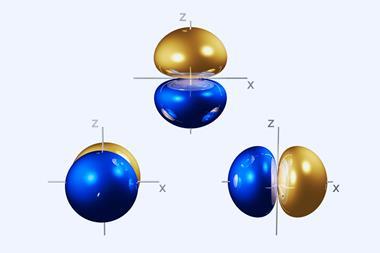Steric effects are central to so many of our chemical narratives. Being linked to how atoms and molecules occupy space means steric effects are intuitively satisfying – chemical scenarios you can visualise. But even when steric arguments correctly predict an outcome or a trend, it doesn’t mean that steric effects are the cause. Sometimes you get the right answer for the wrong reason.
Ethane is at its most stable when in a staggered conformation and organic chemistry textbooks regularly attribute this to steric repulsion keeping electrons in C–H bonds on the different carbon atoms as far apart as possible. But in 2001, a computational method concluded that steric repulsion in ethane is only of secondary importance to its equilibrium structure and instead put forward that hyperconjugation to achieve optimal resonance stabilisation is the overriding cause. Chemists are yet to settle this debate.
Research we reported on in July is a similar situation, albeit reversed. For years, orbital interactions were thought to explain why C–C and C–H bonds contract as the number of substituents surrounding the carbon centre decreases. But this study suggests it’s actually the result of reduced steric repulsion when there are fewer substituents around the carbon centre.
These cases highlight a lack of consensus in the literature on how to quantify steric effects. This undoubtedly stems from terms like steric hindrance being one of those chemical concepts that lack a truly unique definition. Iupac defines steric hindrance as ‘the original term for a steric effect arising from crowding of substituents’. Meanwhile, it defines a steric effect as ‘the effect on a chemical or physical property experienced (structure, rate or equilibrium constant) upon introduction of substituents having different steric requirements’.
Of course, this isn’t the first time that science’s relationship with words has run into trouble. And although ideas begin as words, chemists can bridge the gap between theory and experiment more effectively when terms correspond to an observable physical reality. Modelling steric effects, which are noumena – things that are knowable by the mind, but cannot be directly measured – rather than phenomena, was never going to be simple. Even so, several research groups are seeking out general methods to quantify steric effects from a theoretical viewpoint. With steric effects being one of the most widely used concepts in chemistry, the potential benefits of understanding them better could be far-reaching.












No comments yet